Last updated: January 5, 2026
Article
National Parks of Boston and the Network to Freedom
National Parks of Boston is proud of its strong partnership with the National Underground Railroad Network to Freedom Program as it honors, preserves, and promotes the history of resistance to enslavement through escape and flight. As of Spring 2023, National Parks of Boston has ten designated sites and programs on the Network to Freedom.
The following are designated sites on the Network to Freedom at the National Parks of Boston:
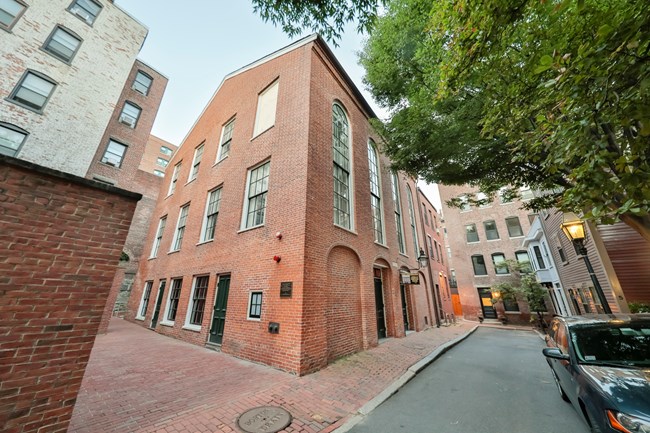
Photo by Matt Teuten. Courtesy NPS/National Parks of Boston
African Meeting House
Designated: 2018
Built in 1806, the African Meeting House served as a major religious, educational, and political center of the Black community in 19th century Boston. Here activists gathered and organized to advocate for the end of slavery, push for equal rights, and assist those on the Underground Railroad. In the narrative of his escape from slavery, Moses Roper wrote of how enslavers often searched for fugitives at the African Meeting House. Activists held numerous meetings to provide assistance for freedom seekers here. For example, the New England Freedom Association used this space to plan strategies for assisting those escaping slavery. The community met here to protest the Fugitive Slave Law of 1850 and to coordinate their collective responses to it. The African Meeting House is associated with prominent people including Lewis Hayden, William Cooper Nell, and William Craft, all of whom have well documented ties to the Underground Railroad movement. Please visit the African Meeting House to learn more.
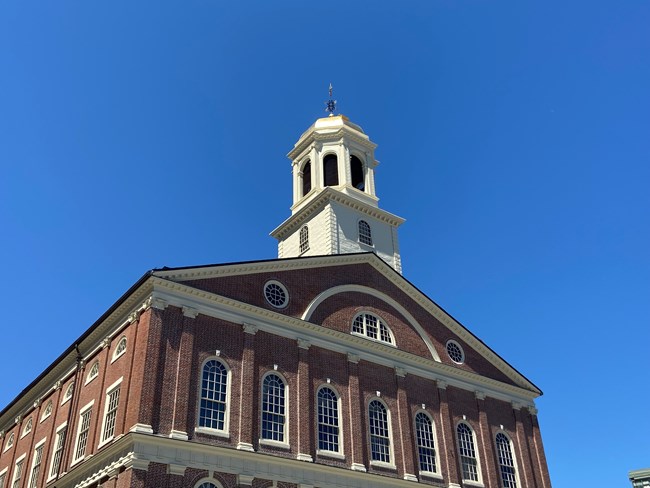
NPS Photo/MWoods
Faneuil Hall
Designated: 2018
Built in 1742, Faneuil Hall has a long and cherished history in Boston. Though most known for its role as a focal point for colonial protests in the years leading up to the American Revolution, Faneuil Hall later served as an important gathering space for public dissent and organized resistance to the fugitive slave laws of the country. Beginning in the late 1830s, Boston's abolitionists began regularly using Faneuil Hall to host their meetings and rallies. Oftentimes, they called these meetings in response to high profile fugitive slave cases in the city.
The abolitionists not only protested the arrest of freedom seekers but also actively organized against the fugitive slave laws here. They pressured state and local officials to resist enforcing these federal laws. Additionally, they formed vigilance committees to assist those seeking freedom on the Underground Railroad, encouraging supporters to help those in need and thwart the slave catchers. Faneuil Hall provided an important venue where abolitionists gathered to plan their collective action in support of those seeking freedom on the Underground Railroad. For more information on Faneuil Hall and its Underground Railroad history, please visit Faneuil Hall, the Underground Railroad, and the Boston Vigilance Committee.
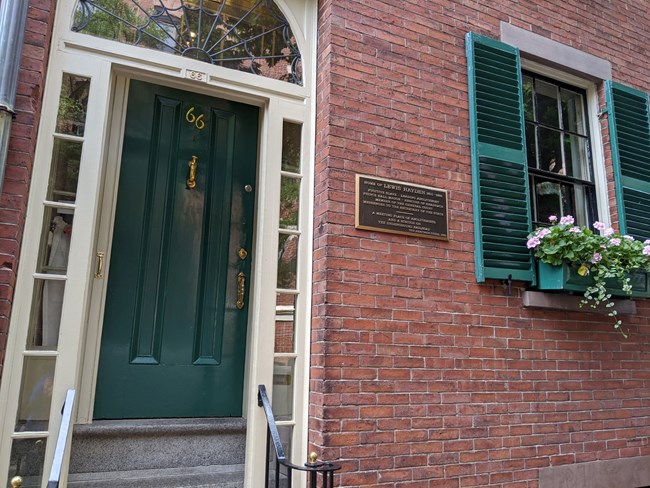
NPS Photo
The Lewis and Harriet Hayden House
Designated: 2021
The Lewis and Harriet Hayden House at 66 Phillips (formerly Southac) Street on Beacon Hill served as the preeminent Underground Railroad safe house in Boston during the 1850s. In the 1840s, the Haydens escaped slavery in Kentucky and eventually settled in Boston. They lived in this house by 1850 and turned it into one of the most documented safe houses in the area. Lewis Hayden served as one of the most active members of the Boston Vigilance Committee, an organization dedicated to fugitive assistance created in the wake of the 1850 Fugitive Slave Law. The Treasurer's Account book of this committee documents the Haydens sheltering and assisting scores of freedom seekers throughout the 1850s. The famous couple William and Ellen Craft stayed with the Haydens following their unique escape from slavery. Lewis also played a prominent role in the courthouse rescue of Shadrach Minkins in 1851 and the attempted rescue of Anthony Burns in 1854, both of whom had been arrested under the provisions of the Fugitive Slave Law following their escapes from Virginia. Abolitionist and Vigilance Committee member, Henry Ingersoll Bowditch declared that the Hayden House served as "the temple of refuge for any hunted refugee from Southern slavery."1 To learn more about the Hayden House, please visit the Lewis and Harriet Hayden House.
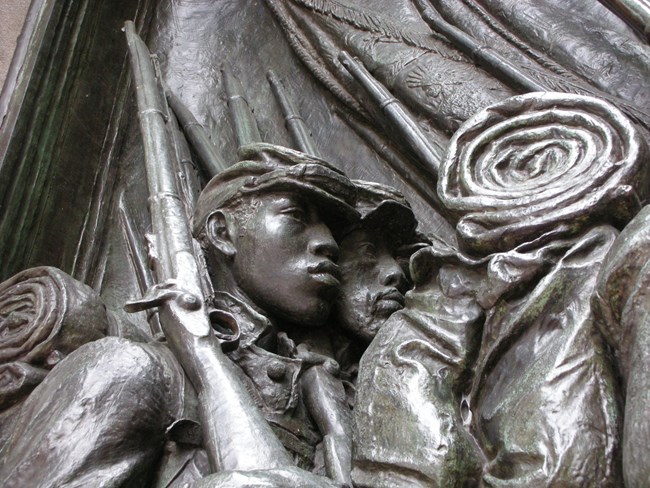
NPS Photo
The Robert Gould Shaw/ 54th Massachusetts Regiment Memorial
Designated: 2022
Its history deeply intertwined with the Underground Railroad, Augustus Saint-Gaudens' Robert Gould Shaw/54th Massachusetts Regiment Memorial in Boston commemorates one of the first Black regiments in the Civil War. Both the memorial and the regiment it honors have strong connections to the Underground Railroad. Freedom seekers and those that who assisted them are represented within the regiment, in its recruiters, and in those that who honored their sacrifice with the creation of this monument. To learn more about the regiment and the memorial and their connections to the Underground Railroad, please see The Robert Gould Shaw/54th Regiment Memorial and the Underground Railroad.
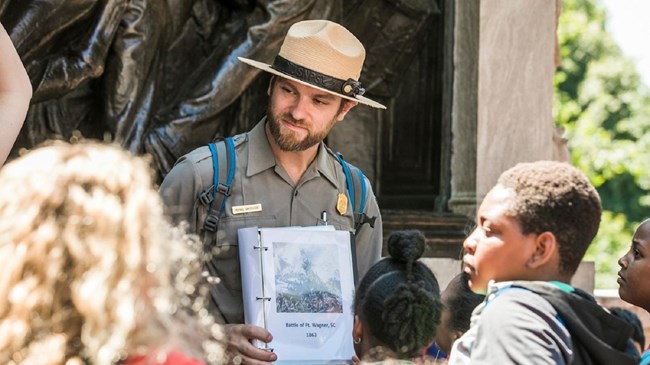
Matt Teuten
The following are designated programs on the Network to Freedom at the National Parks of Boston.
The Black Heritage Trail®
Designated: 2017
The Black Heritage Trail® is a walking tour through the Beacon Hill neighborhood of downtown Boston. This trail is offered as a guided tour by Boston African American National Historic Site rangers. It can also be taken as a self-guided tour using the park brochure or mobile app. This tour explores the rich history of the Black community in antebellum Boston with a focus on its leading role in the abolition movement, the struggle for civil rights, and the Underground Railroad.
This tour begins at the Robert Gould Shaw/54th Massachusetts Regiment Memorial and makes its way through the north slope of Beacon Hill stopping at historic homes, schools, and meeting spaces of the 19th century Black community of Boston. Sites along the trail include the home of Lewis and Harriet Hayden, a well-documented station on the Underground Railroad. Other stops include the homes of John J. Smith, John Coburn, and William Cooper Nell, all of whom played integral roles in Boston's Underground Railroad network. One of the final stops along the tour is the African Meeting House, a center of the Black community's religious, educational, and political life that also served as an important gathering space for Underground Railroad activity. Visit the Virtual Black Heritage Trail® Tour to learn more.
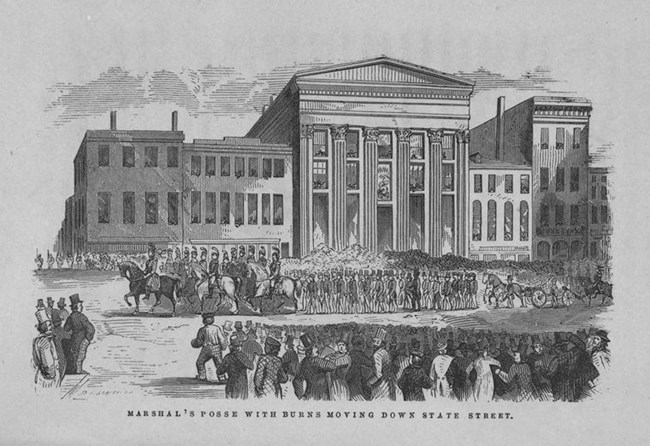
From The New York Public Library
Ghosts of the Revolution
Designated: 2019
Ghosts of the Revolution is an interactive public walking tour about the capture, attempted rescue, and subsequent rendition of Anthony Burns whom authorities arrested under the Fugitive Slave Law in 1854. This case placed the eyes of the nation squarely on Boston, a city proudly known by its citizens as the "Cradle of Liberty" for its leading role in the American Revolution. This tour looks at how Bostonians grappled with the Fugitive Slave Law and the federal government’s overwhelming enforcement of it in the Burns case.
Facilitated by National Parks of Boston staff, this program uses Audience Centered Engagement techniques rooted in primary source materials. The program retraces the actual steps of the rendition of Burns from the courthouse jail to Boston Harbor where he boarded a ship which returned him to slavery. Through these dramatic experiences activated in the authentic spaces in which the events took place, visitors discover and discuss factors that galvanized large numbers of northerners to take a stand on slavery and emboldened people to challenge the Fugitive Slave Law. Looking deeply at this historic flashpoint, visitors are encouraged to find contemporary relevance in their own lives. To learn more about Anthony Burns' story, please visit "God made me a man- not a slave": The Arrest of Anthony Burns.
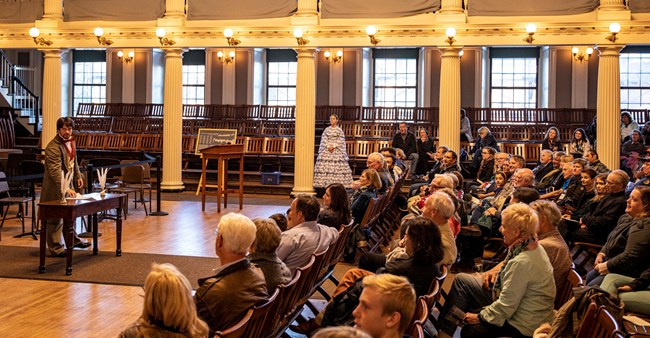
Courtesy of Buddy Secor.
Rocking the Cradle
Designated: 2019
Rocking the Cradle is a public program about Boston's response to the case of Anthony Burns whom authorities arrested under the Fugitive Slave Law in 1854. Facilitated by National Parks of Boston staff and presented in Faneuil Hall, this program recreates the public meeting held in the aftermath of Burns’ arrest. Participants receive a character card representing a historical figure and his/her position on the matters at hand. Cards include lines to be read aloud, as well as context that enable each visitor to forge a connection with their character. Audience members assume their parts, share their "in character" positions, and experience "first hand" the passion and fury of this meeting. Participants argue to either break the Fugitive Slave Law in an obedience to a "Higher Law," or comply with the Fugitive Slave Law to uphold "Constitutional Law." After hearing the different arguments, audience members ultimately vote on resolutions on how to proceed.
Through these dramatic experiences rooted in primary source research and activated in the authentic space in which the event took place, visitors discover factors that shook the city and the nation during the Fugitive Slave Law years. To learn more about this program please visit Rocking the Cradle.
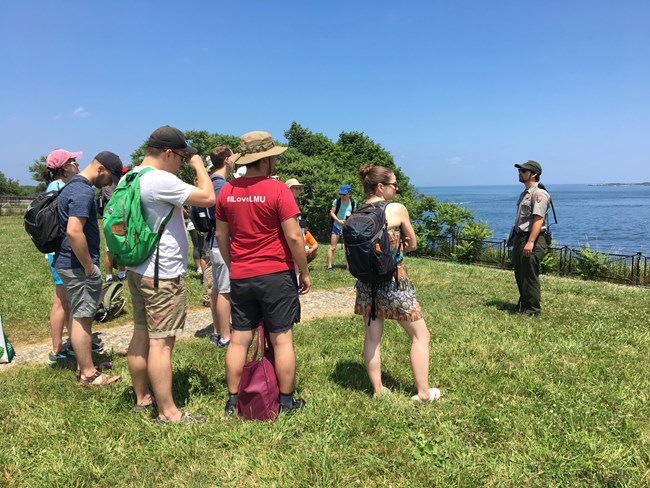
NPS Photo
Safe Harbor: Boston's Maritime Underground Railroad
Designated: 2020
Safe Harbor: Boston's Maritime Underground Railroad is an interactive public walking tour looking at several sites and stories related to Boston Harbor and the Boston Harbor Islands' role in the Underground Railroad. Facilitated by National Parks of Boston staff, this program utilizes Audience Centered Engagement techniques rooted in primary source materials. The program's six stops on Georges Island offer different vantage points of the harbor overlooking sites tied to daring maritime escapes, successful evasion of slave catchers, as well as some tragic stories of capture and rendition. Through these dramatic experiences activated in the authentic spaces in which the events took place, visitors discover and discuss this often-overlooked history of the harbor. To learn more about the Underground Railroad history of Boston Harbor, please visit Safe Harbor: The Maritime Underground Railroad in Boston.
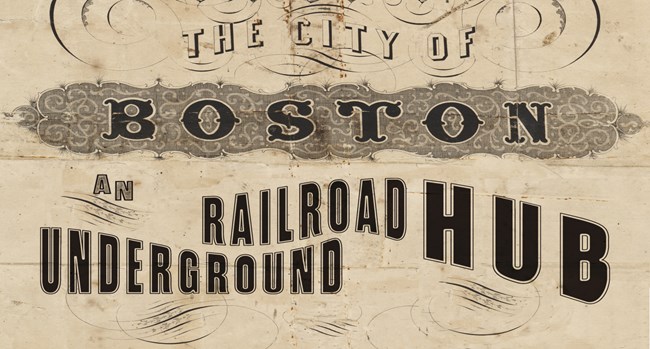
NPS/Hanson Plass
Boston: An Underground Railroad Hub
Designated: 2021
Boston: An Underground Railroad Hub is a digital exploration of Boston’s long history as a center of Underground Railroad activity. Through an array of interactive maps, videos, articles, and other features, visitors are invited to learn about the freedom seekers who escaped to Boston and the people who assisted them. Housed on Boston African American National Historic Site’s website, this project features a contextual essay and interactive story-maps following the lives of individual freedom seekers who came to Boston. This project also features articles and videos that look at different aspects of the Underground Railroad, including the tragic case of Anthony Burns and the role of Boston Harbor in the Maritime Underground Railroad.
Further, this project includes an expansive interactive map that showcases the people and places associated with the Underground Railroad network in the city. While introducing notable safe houses and Underground Railroad operatives, this map also highlights sites of public protest and concerted action against the fugitive slave laws, spaces tied to harrowing arrests and rendition, and places of heroic rescues and resistance. By elevating these once covert places and stories, this project encourages further exploration and engagement with Boston's unique role in this inspiring movement. To explore this digital exploration, please visit Boston: An Underground Railroad.
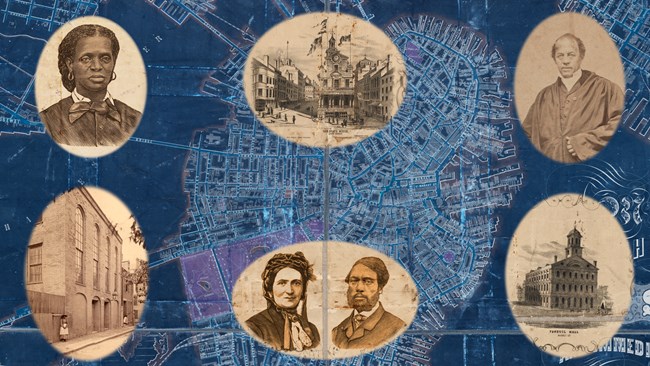
NPS Photo
The Underground Railroad in Boston: A Self-Guided Audio Tour
Designated: 2023
The Underground Railroad in Boston is a Self-Guided Audio Tour freely available on the National Park Service App as well as on Boston African American National Historic Site website. This twelve-stop narrated tour begins in the historically African American neighborhood of Beacon Hill and makes its way through downtown Boston to Long Wharf on the waterfront.
Featuring nuanced interpretation, readings of first-hand accounts and other primary sources, and an original score inspired by traditional spirituals and folk songs, this tour delves into lesser-known stories of the Underground Railroad in Boston. It looks at freedom seekers who came to Boston, including William and Ellen Craft, Elizabeth Blakely, and others. It also highlights the individuals, organizations, and institutions that assisted freedom seekers along their journey, including William Cooper Nell, the Boston Vigilance Committee, and the Twelfth Baptist Church among others. Furthermore, this tour examines the private ways in which people participated in the Underground Railroad network as well as the larger scale public protests and open confrontations with enslavers, their agents, and government authorities.
By elevating these once covert places and stories, this tour encourages exploration and engagement with Boston's unique role in this inspiring movement and aims to help visitors find contemporary relevance in their own lives. For more information, please visit The Underground Railroad in Boston Audio Tour.
To learn more about other Network to Freedom listings throughout the country, please visit Explore Network to Freedom Listings.
Footnotes
- Henry Ingersoll Bowditch, Life and Correspondence of Henry Ingersoll Bowditch. Volume II (Cambridge: The Riverside Press, 1902), 350-351, https://archive.org/details/lifecorresponden02bowd/page/350/mode/2up.
